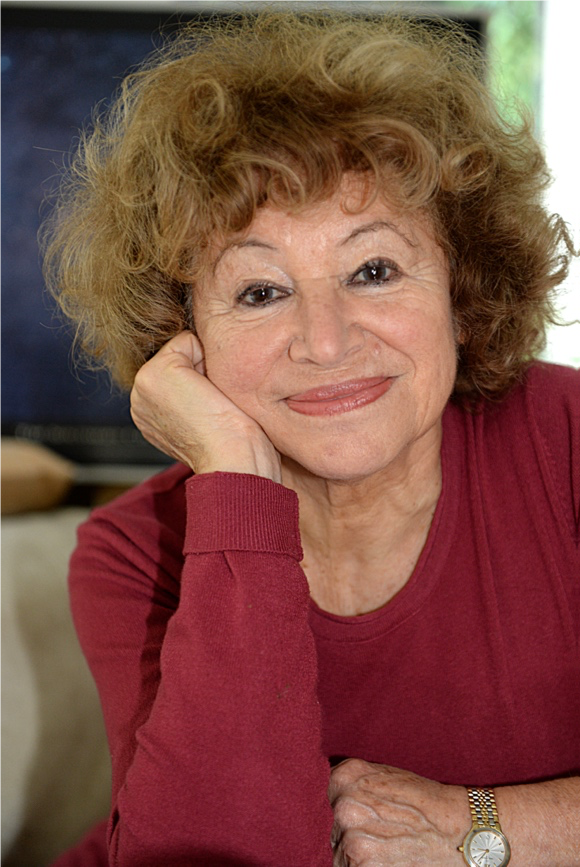After being awarded the 2020 Tate Prize for International Leadership in Physics, astrophysicist Dr. Catherine Cesarsky is honored with another prestigious award: the 2024 Fritz Zwicky Prize in Astrophysics & Cosmology for her outstanding contributions to understanding galaxy evolution through infrared space observations, as well as for her leadership in developing contemporary astronomy observation infrastructure.
The Fritz Zwicky Prize for Astrophysics & Cosmology honours scientists who have obtained fundamental and outstanding results related to astrophysics and/or cosmology. The Fritz Zwicky Prize is awarded biennially, for the first time in 2020, by the European Astronomical Society on behalf of the Fritz Zwicky Foundation, located in Glarus, Switzerland.
Fritz Zwicky Prize for Astrophysics & Cosmology
Dr Catherine Cesarsky obtained a Physics degree from the University of Buenos Aires, and a PhD in 1971 in astronomy from Harvard University. She then moved to the California Institute of Technology before joining the Commissariat à l'Energie Atomique (CEA) in 1974, where she eventually became Head of Astrophysics (1985-1993), and then Director of CEA basic research in physics and chemistry (1994-1999). Dr Cesarsky was the PI of Isocam, the infrared camera on the European satellite ISO (Infrared Space Observatory). She became then the Director General of the European Southern Observatory (1999 to 2007), and then President of the International Astronomical Union (2006-2009). Dr Cesarsky received several prizes and awards for her achievements and is member of several renowned national and international Science Academies. From 2009 to 2012, she was High Commissioner for Atomic Energy in France, advisor to the French government for science and energy issues. She is now Chairperson of the SKA Observatory Council. Dr Cesarsky has worked in several central areas of modern astrophysics, initially in high-energy astrophysics, then focusing to infrared astronomy in several fields from interstellar medium to galaxy evolution.
Dr Catherine Cesarsky started her career in the high-energy domain. She first gained international recognition through her theoretical work on the propagation and acceleration of cosmic rays. Her interests then shifted toward infrared astronomy where she made pioneering research in several fields of astrophysics exploiting advances in infrared astronomy. While at CEA she led the development and construction of the infrared camera ISOCAM onboard ESA’s ISO satellite. This led to numerous pioneering studies in particular galaxy evolution. Dr Cesarsky organized the ISOCAM Central programme, European Astronomical Society – 2024 Prizes 7 which provided new insights into infrared emission from the diffuse interstellar medium and normal galaxies, star formation in molecular clouds, dust formation in supernovae and dust embedded star formation in colliding galaxies. She led the ITGES collaboration that conducted deep highly sensitive surveys with ISOCAM which led to the discovery of the individual galaxies responsible for the bulk of the Cosmic Infrared Background.
As Director General of the European Southern Observatory, Dr Cesarsky was the driving force towards the realisation of the full potential of ESO's unique Very Large Telescope (VLT) and its associated interferometer (VLTI). She made pivotal contributions towards the European-North American agreement on the Atacama Large Millimeter/submillimeter Array (ALMA), later extended to Japan, and oversaw the early years of ALMA’s construction. Under her leadership the La Silla Observatory transitioned into a highly productive and competitive observatory working in parallel to the VLT. Further, Dr. Cesarsky’s leadership was instrumental into channeling the astronomy community towards the development of an extremely large telescope. During her final years as ESO Director General she oversaw the development and selection of the revolutionary five mirror design for ESO’s Extremely Large Telescope, which paved the way for further design studies of this telescope.
As IAU President Dr Cesarsky played a leading role in the coordination of the word-wide effort toward the International Year of Astronomy in 2009, proclaimed by the United Nations and endorsed by UNESCO. IYA2009 marked the 400th anniversary of the first astronomical observation through a telescope by Galileo Galilei. IYA2009 celebrated astronomy and its contributions to society and culture, with events at all levels, from national, regional to global. Dr Cesarsky further held several high-level positions in France and international. She chaired the High-level committee on large scale science infrastructures for the French ministry of research and higher education in the period 2013-2018 and from 2014 to 2016 she was the Chair of ESA’s Space Science Advisory Committee. From November 2017 to February 2021, Dr Cesarsky chaired the Board of Directors of the SKA Organization, and since then she chairs the Council of the Square Kilometer Array Observatory.
These extensive achievements make Dr Catherine Cesarsky an outstanding awardee of the 2024 Fritz Zwicky Prize for Astrophysics and Cosmology.
"I am deeply honored to receive this award, as a testament to the appreciation of my European astronomer colleagues. Fritz Zwicky was a remarkable astrophysicist. Among his many pioneering works, he is the true discoverer, in 1933, of dark matter, which prevents galaxies in galaxy clusters from dispersing. I knew him when I was a postdoc at Caltech, in the last years of his life. He always attended seminars, and at the end he would raise his finger and say: yes, okay, I predicted or discovered that in..., and it was always true", declares Dr. Cesarsky with joy and gratitude.
More information: EAS website
Contact : Catherine Césarsky
• Institut de recherche sur les lois fondamentales de l'Univers (Irfu) • Le Département d'Astrophysique // UMR AIM (DAp)





